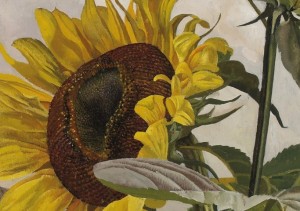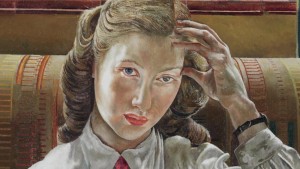The custodians of Carrick Hill – the gift to the State of their home by Bill and Ursula Hayward – have chosen well the subject of Stanley Spencer to commemorate 30 years as a public institution.
For nobody promoted the works of the diminutive Spencer in this country more than Ursula, first through her own acquisitions (thanks to her close networks in London) and then in her role on the board of the (then) National Gallery of South Australia (now the Art Gallery of South Australia.)
This exhibition, limited appropriately to around 30 works, adorns the northern upstairs rooms of Carrick Hill and provides a rich overview of his work.
To be sure Spencer was (at the least) a slightly odd man; perhaps his home schooling deprived him of a sense of the world but praised he is today by art lovers for the outcomes of it. His life and art centred around Cookham, a village on a bend in the Thames River near Maidenhead on the now outskirts of west London. There he focused initially on landscapes, not of grand views but of the ordinary, cosy world of his own backyard. His works bring a brilliant radiance and detail to that mundane place, with never a blink askance about the potential distractions of such things as glasshouses or jagged walls that rest behind his immediate subjects. Flowers were another favourite subject with his Sunflower (above) one of the most striking works exhibited.
But while his fancies also lay in nudes, portraits and various Christian themes, economic austerity, somewhat self-imposed, necessitated him to keep churning out the landscapes and flowers in order to stay alive. For it was another of his failings to leave his first wife, Hilda, in favour of Patricia, his model subject, who even known to be a lesbian he married granting her his house in a pre-nuptial arrangement. It seems the marriage did not even get as far as the bedroom on the wedding night.
These sadnesses are also displayed in two very poignant paintings – Hilda Welcomed and Parents Resurrecting – homages to happier and more innocent times with these large influences on his life, now lost as he struggles on. The figures in these are rounded, avuncular and fulsome individuals, a departure from some of the usual tortured portraits usually commended from that and other eras.
Still for all his disappointments and frustrations, Spencer’s work through the late 1930s sustains a poise and calm at odds with his predicament, some testament to his vision.
This is an excellent exhibition of one of England’s finest 20th century painters, bringing together works from across the country and England in a rare retrospective of colour and beauty that sits more than soundly in the grandeur of Carrick Hill. The accompanying book by Richard Heathcote and Anna Jug adds much to the understanding of the exhibit and one may well benefit from reading it before embarking up the majestic staircase.




Recent Comments